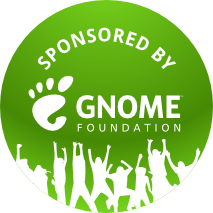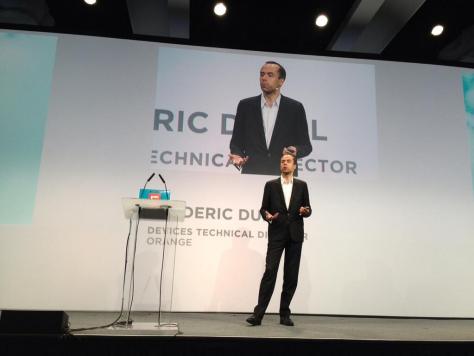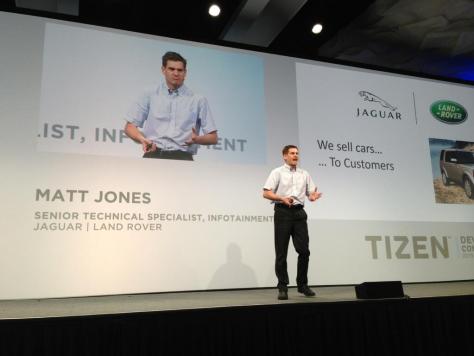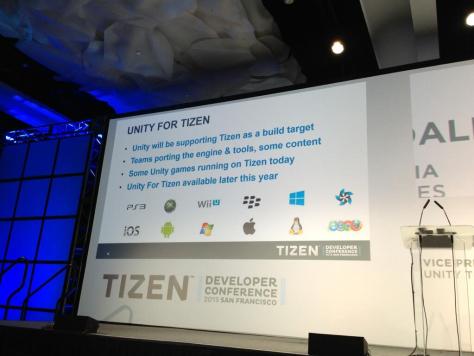The growth of mobile web users is staggering. While some of us have been browsing the web on mobile devices for nearly ten years, most of the world population is only now getting there.
Planet maemo
The growth of mobile web users is staggering. While some of us have been browsing the web on mobile devices for nearly ten years, most of the world population is only now getting there.

I win the prize for last-to-write-about-conference, hands down. I had enough time to come up with solid excuses of course: Right after GNOME.Asia Summit in Seoul I went on to Tokyo, for two more conferences. And after that, I've been busy with my vacations.
With a direct flight from London (LHR) to Seoul (ICN), I was lucky enough to fly on Korean Air. Only Quatar Airways comes close in terms of service, though I still like their aubergine-colored uniforms more. Incheon Airport won a "best airport" award several times in a row, and I think it's well-earned. It starts with the gorgeous view when flying in, but the best argument going for the airport is probably A'REX, an affordable, fast and reliable railway line that connects Icheon with the most important spots in the city. Taxi drivers will try to convince you otherwise but don't be fooled, there's no competition to that line.
I stayed near Hongik University station, which is serviced by A'REX. It's a great location, especially at night. Tristan, our famous GTK+/Glade (and now also EDS) hacker, decided to stay nearby so we could go out for drinks and cure my jetlag with great food and a hangover. The hangover didn't happen (too much food?) and neither did the jetlag. As I arrived a couple of days early, I had enough time to discover the city a bit and prepare for the conference (read: slides and stuff). My talk about Wayland input methods seemed to be well received. It lead to a couple of good discussions about text input in general.
The venue was difficult to find in this maze of office buildings. It was good to see old & new friends at the summit though I had hoped for a lot more attendees. Perhaps (local?) advertising the event at universites would have helped. At least in my perception, the target audience for F/OSS development have always been students with enough spare time on their hands to try out stupid things (such as writing free software). I have come to prefer 3-day conferences over 2-day conferences. Two days just doesn't allow for enough hallway discussions as your time to attend talks is very limited. Spreading talks out over three days gives me a better opportunity to balance between talks and hallway track. I wish for instance that FOSDEM wasn't crammed into two days. The other extreme are probably Akademy and GUADEC that go over a week if you count BoFs and workshops as part of the confernence. But I am pretty sure that two days are too short ;-)
Thanks to the GNOME Foundation for 1) accepting my membership \o/ 2) approving my travel sponsorship. This would not have happened without my talk being accepted, which as I understand from talking to others who submitted session proposals was a quite lucky circumstance on its own.

The newly elected Hildon Foundation Council (HFC) provide the new Hildon Foundation Board eligibility rules (see appendix) for Board of Directors elections and announce elections for HiFo's BoD.
The nomination period for said BoD elections will start on the June 1st 0:00UTC and will end on June 14th 23:59UTC, the contemplation period runs from June 15th 0:00UTC till June 21st 23:59UTC, and voting then runs from June 22nd 0:00UTC till June 28th 23:59UTC.
Appendix - Hildon Foundation Board Candidate Eligibility Rules
1. Nominations will be accepted 3 weeks before the election begins from any community member with a karma of 100 or above.
2. Nominees with a commercial interest in Maemo or Hildon Foundation, such as working for Nokia - or any other company involved with software development - must declare their interest when advertising their nomination. Failure to do so may result in the HFC, declaring their nomination invalid and so bar them from standing in the current election.
3. Elections last for 1 week.
4. Only community members who have had maemo.org accounts for over 3 months and have karma of 10 or above, may vote.
5. Each community member eligible to vote gets a single ballot.
6. The 7 nominees voted for most, as counted by a single transferrable vote system are elected. (For special cases see HiFo bylaws.)
7. There is no limit to the number of times a board member can stand for re-election.
Your Chairman
Chemist
The Tizen App Store was officially announced today at the Tizen Developer Conference, and it will be the goto place for all your application needs. The store isn’t accessible to the general public yet, but is open for developers to submit their apps (seller.tizenstore.com). Registration and publishing apps is free, and the promise to developers is that their apps will be validated within 3 days of being submitted for approval.

The Tizen Store is pretty much everything you expect from a modern App Store, however it does have a couple of novel features. One of them is the ‘Discounted’ section. So if any app is on sale, it will automatically show up there. The performance seemed smooth, and the UI kind of reminds of the Nokia Store on the N9, and parts of Google Play.
Here is a detailed look at the Tizen App Store running on a a Tizen phone:
Going into the Tizen Developer Conference there were a few major questions that people wanted answers to. The developers wanted to know details about the Tizen App Store, everyone wanted to know when we’d see the first Tizen devices, which would be the carriers supporting them, and what about the big games apps?
The keynote did manage to answer a few of those questions, albeit in not complete detail. Tizen devices are coming this year, but Jong-Deok Choi, EVP, Samsung won’t be more specific. In terms of operator support, Roy Sugimura from NTT DOCOMO has stated that they will be carrying the first Tizen device in the second half of this year. Frederic Dufal, Devices Technical Director for Orange has also announced that they are committed to launching a Tizen project this year (end of summer, Europe only).

- The big change from Tizen 1.0 to the current 2.1 release is the ability to run native apps. Samsung has folded Bada into the platform, although this was not specifically mentioned in the keynote.

- The Tizen Store has been announced, and is open for app developers to submit their apps. Users cannot access it yet.

- Tizen 2 also has an inbuilt security layer, McAfee has contributed to this.

- A Tizen App Challenge has been announced. Submissions will be accepted June 1 onwards, and a total of 4$ Million is up for grabs.

- Also big news for gaming enthusiasts, some of the top gaming engines like Unity, Havok, Game Salad are coming to Tizen.

- NTT DOCOMO will make a Tizen device available in the second half of the year.

- So will Orange. They like Tizen because of its open nature, and HTML5 focus. The launch will be a part of the ‘back to school’ campaign that will start at the end of summer. Europe only for now.

- We also got a look at the in vehicle application of Tizen, Jaguar | Land Rover wants to push the boundaries of what people expect from a in-car Linux based system. A competition to generate ideas, UI elements and functionality is also under way.

- Finally, the next major release of Tizen will be the big 3.0. Expect this release in 2014 devices. The roadmap for the release isn’t complete yet, and the development will be done openly on Tizen.org. They encourage platform developers and other open source developers to contribute.

- There is a tremendous amount of push to bring big name developers to Tizen. Facebook, Angry Birds were named in the keynote. I saw demoes of Gameloft’s Asphalt 7 and Real Golf running on a Tizen reference device, along with games based on the Unity engine, games from Sega, and Opera Mini.
We’ve seen Open Mobile’s implementation of brining Android apps to Tizen before, but that method involves deployment on a platform level. The Open Mobile code needs to be a part of the Tizen code before the Android apps can be run on Tizen. Infraware, the company behind the Polaris App Player has a different approach.

The way this works in that they have a solution called PAG (Polaris App Generator) that lets the developer upload an Android app (APK) and it converts it into a TPK file that can be installed on the Tizen device. Then to run this modified TPK, you need to have the PAP (Polaris App Player) installed on the phone. Once that’s present, the modified TPK that you just installed will launch inside the PAP, and behave like a native Tizen app.
The company is giving away the Polaris App Player to users for free, in the hope that developers will use their service to deploy their Android apps to Tizen, thus making them money. While I have my doubts about Android Apps ‘officially’ being supported on Tizen, Infraware has a chance of succeeding as they don’t need to be a part of the platform, and have a business model as long as the developers and users are on board. Here is a video of the implementation in action:
While there is a noticeable slow down while running high performance games, most apps should run fine. Although, there will always be the issue of not all UI elements working properly because the app was originally made for Android in mind. The current implementation is based on Android 2.3 Gingerbread, so that means none of the ICS and up only apps, will be available. According to the company, PAG can port 80~90% of Android apps to Tizen app without re-compiling. Some examples include games such as Angrybird series, Counter Terrorist, Treasure Detective, Fruit Slice, Drag Racing, Shut Bubble Deluxe, Cut the Rope Free, Air Hockey etc.
Back in the day Intel had Moblin (PC and tablet OS), and Nokia had Maemo. Both of which came together to form MeeGo, an effort which has since been abandoned. Instead we have Tizen, a OS targeted at not just mobile phones, but also in vehicle systems, tablets and the PCs. While we’ve seen it running on mobile phone hardware (ARM chips), there has so far been nothing on the PC front, that was until today.

At the Tizen Conference 2013, I got a look at Tizen running on Intel’s Ivy Bridge ultrabook. While the PC release of Tizen is still some time away, the following video should give you a good idea of what to expect in terms of the UI and functionality.
The free to download Tizen images for laptops will be made available through Tizen.org website. While the best platform to run that release would be Ivy Bridge and up, I’m told that work is being done to support older chips and netbooks (in a limited way) as well.
Thanks to Patrick from Intel for the demo.

I am looking for Javascript software engineers. You need to have expertise in Javascript, HTML5, CSS, and high-level programming concepts. Developing experience on Webkit or Firefox engine as well as a strong understanding of browser rendering is obviously a plus. You need to be knowledgeable on the common JavaScript Libraries (jQuery, Sencha, Enyo,etc...). This would essentially be to build a team to work on web UX technologies and interfaces.
On a similar subject, I am also looking to expand our research activity around Javascript itself and Javascript tools (first result to come soon). So if you have deeper knowledgeable about the language itself or the frameworks, do not hesitate to contact me as well or meet me at the Tizen developer conference.
I would like to share with you this port of SeriesFinale for Blackberry.
Unlike the other versions, I was not involved in the development of this one. It was developed by Micke Prag, who also started the Meego/N9 port back in the day.
I developed the first version of SeriesFinale in 2009 for the defunct Maemo system and released also a version for the N9/Meego in 2011 (there was also a version for GNOME but I never finished it…). It is very good to see that it continues its life even if I am not involved this time.
I don’t own a BlackBerry so I am not able to try it but judging from this video, it definitely looks good so if you’re a BB user, check it out!
Judging from the success that a clone for Android and a similar online service have, it seems like I could have started a whole business out of it…

If you want to integrate such features into your own app, the code for querying the headset buttons is readily available in the gPodder source tree (src/gpodder/qmlui/helper.py):
import dbus
class MediaButtonsHandler(QtCore.QObject):
def __init__(self):
QtCore.QObject.__init__(self)
headset_path = '/org/freedesktop/Hal/devices/computer_logicaldev_input_0'
headset_path2 = '/org/freedesktop/Hal/devices/computer_logicaldev_input'
system_bus = dbus.SystemBus()
system_bus.add_signal_receiver(self.handle_button, 'Condition',
'org.freedesktop.Hal.Device', None, headset_path)
system_bus.add_signal_receiver(self.handle_button, 'Condition',
'org.freedesktop.Hal.Device', None, headset_path2)
def handle_button(self, signal, button):
if signal == 'ButtonPressed':
if button in ('play-cd', 'phone'):
self.playPressed.emit()
elif button == 'pause-cd':
self.pausePressed.emit()
elif button == 'previous-song':
self.previousPressed.emit()
elif button == 'next-song':
self.nextPressed.emit()
playPressed = QtCore.Signal()
pausePressed = QtCore.Signal()
previousPressed = QtCore.Signal()
nextPressed = QtCore.Signal()
MediaButtonsHandler is already a QObject subclass, so you can easily expose an instance of this class to your QDeclarativeView rootContext() and connect to the signals in QML (such a "headset button handler" might actually be a good candidate for inclusion into nemo-qml-plugins in Sailfish OS and Nemo Mobile?). As it's really just using the Python D-Bus bindings to get property changes from Hal devices, the code above should be easy (read: trivial) to port from Python to Qt/C++. Be aware that you need to connect to both .../computer_logicaldev_input_0 and .../computer_logicaldev_input, which can both exist if you have a cable headset and a Bluetooth headset connected at the same time.You can get the Headset Camera App for the N9 in Nokia Store now, there is also a video on YouTube showing the app. Or start integrating headset button features into your own app or scripts by adapting the code above. One use case that comes to mind is using the previous/next buttons on a Bluetooth headset to control a photo slideshow on the N9 connected to TV-Out. Enjoy :)

